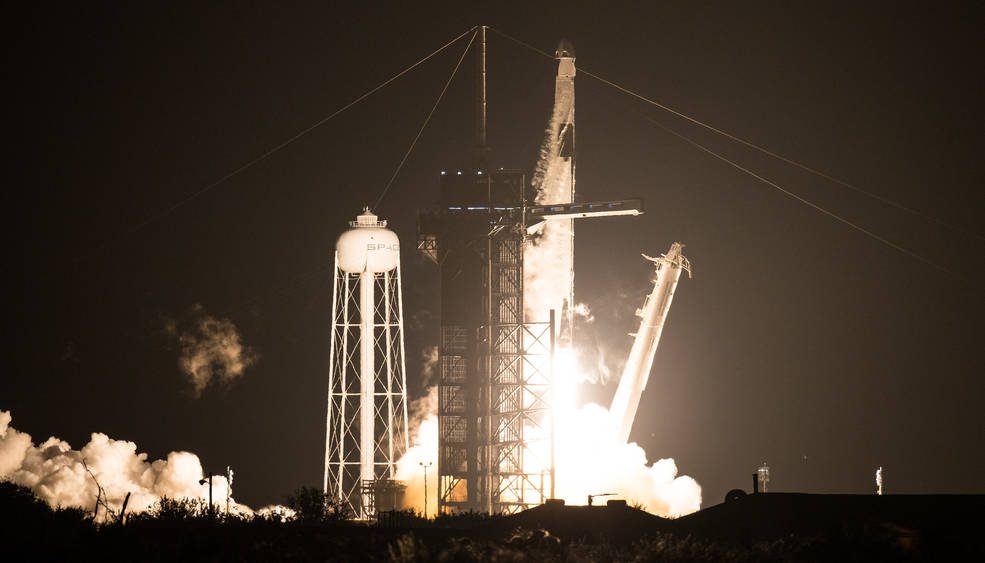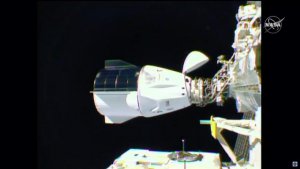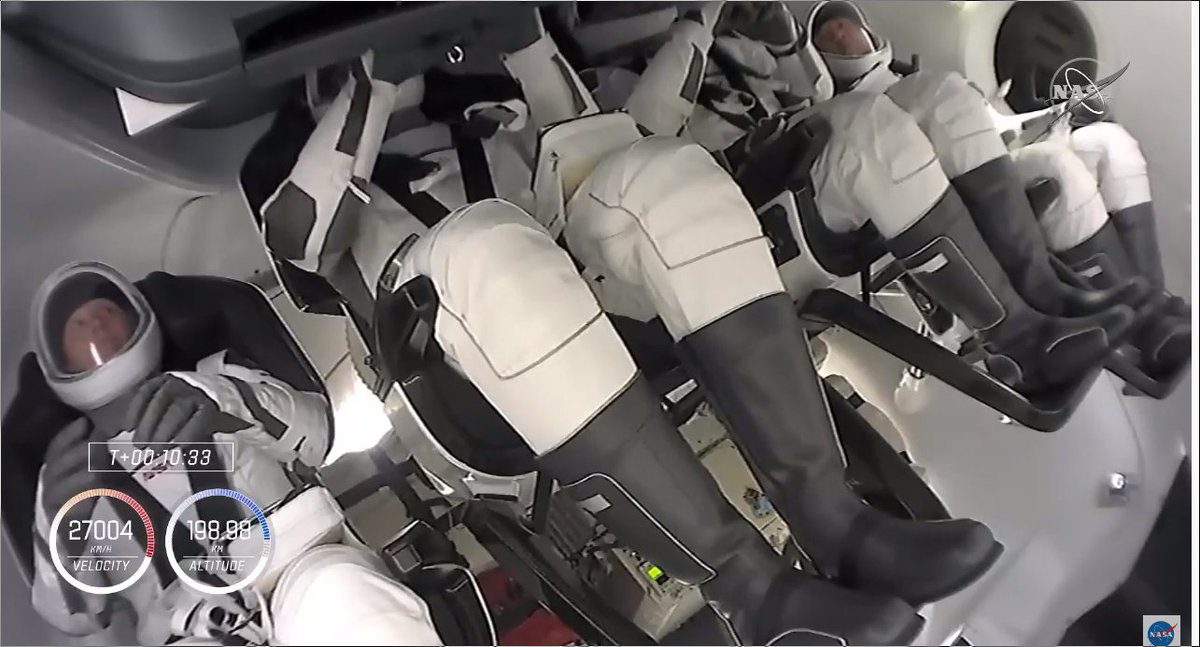A SpaceX Falcon 9 rocket carrying a SpaceX Crew Dragon spacecraft (dubbed Resilience) for NASA’s commercially purchased Crew-1 mission took off for the International Space Station (ISS) at 0037 GMT on 15 November 2020. It was launched from the old Space Shuttle Pad LC-39A at the Kennedy Space Center near Cape Canaveral, Florida. The launch vehicle’s first stage landed successfully on the drone ship “Just Read the Instructions”, located down range, approximately 9 minutes 40 seconds after launch.
The four crew, who were heading for a six-month stay aboard the station, were SpaceX (and former NASA) astronauts Mike Hopkins and Victor Glover, NASA astronaut Shannon Walker, and Japanese astronaut Soichi Noguchi who was being flown for JAXA. The spacecraft soft-docked with the ISS Node 2 (Harmony) module at 0401 GMT followed by a hard docking at 0413 GMT, both on 17 October.
The Crew-1 mission is the first of six crewed missions NASA and SpaceX will fly as part of the agency’s Commercial Crew Programme following unmanned and manned test flights. The mission had several firsts, including:
- the first flight of the NASA-certified commercial system designed for crew transportation, which moves the system from development into regular flights;
- the first international crew of four to launch on an American commercial spacecraft;
- the first time the space station’s long-duration expedition crew size will increase from six to seven crew members, which will add to the crew time available for research;
- the first time the Federal Aviation Administration has licensed a human orbital spaceflight launch.
Post Script: While SpaceX President Gwynne Shotwell attended the launch with NASA Administrator Jim Bridenstine, Elon Musk had to miss it due to testing positive for Covid-19. Musk has been a noted opponent of “lockdown” measures against the spread of the virus and, at one stage, downplayed the seriousness of the pandemic.











